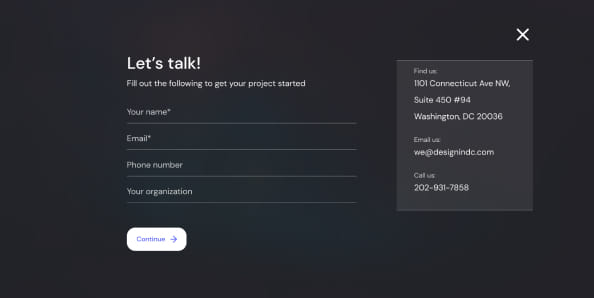What Is Cybersecurity For a Website?
As cyber threats become increasingly sophisticated, the task of safeguarding our digital spaces—from broad network infrastructures to individual websites—has never been more critical. Cybersecurity is no longer just about preventing unauthorized access; it’s about establishing a resilient ecosystem that can adapt and respond to new threats as they emerge. This post will serve as your guide to the world of cybersecurity.
What is cybersecurity
Cybersecurity is about establishing comprehensive defenses for our digital environments. It ensures the safety and integrity of our online interactions, personal information, and business operations. Whether addressing an individual’s smartphone, a favored website, or an enterprise’s network, cybersecurity is fundamental to maintaining trust and functionality in our digital age. We broke cybersecurity down into 2 focus areas:
1. Overall Security:
- Network Security: This area focuses on safeguarding our internet connections and the digital venues they connect to, preventing unauthorized access.
- Application Security: Safe applications are crucial. Security measures begin in the development phase and continue through the lifecycle of the app to thwart potential breaches.
- Data Protection: Ensuring the confidentiality and integrity of data, whether in transit or stored, is vital for personal privacy and business confidentiality.
2. Preparation and Response:
- Emergency Readiness: Organizations need well-defined strategies to recover from cyber incidents and to sustain operations under adverse conditions.
- Educational Initiatives: Building awareness and educating your team on cybersecurity best practices minimize risks associated with human error.
The importance of cybersecurity
Cybersecurity is a critical concern that demands attention and action from all stakeholders in the digital domain. By understanding its importance and implementing robust security measures, we can protect not only our individual assets and information but also the broader digital ecosystem that is increasingly central to our way of life.
Online Presence:
Website Security: For any online entity, security is not optional. A compromised website can suffer drastic traffic loss, damage to reputation, and severe financial repercussions. Moreover, a breach can expose sensitive client data, leading to legal consequences and loss of trust.
Comprehensive Defense: Employing a defense-in-depth strategy enhances resilience by layering protective measures, and addressing various potential vulnerabilities across an organization’s digital presence.
Societal Impact:
Cybersecurity safeguards are crucial for protecting not just individual data but also the essential services that support our daily lives, such as healthcare, finance, and utilities. The fallout from attacks on these sectors can be catastrophic, affecting wide swaths of the population.
The contributions of cybersecurity experts, like threat researchers, are invaluable. They uncover new vulnerabilities, enhance security measures, and educate the public, playing a key role in fortifying our digital world against emerging threats.
Organizational Necessity:
In the business realm, the proliferation of digital tools and data heightens vulnerability to cyberattacks. The stakes are high; a successful breach can interrupt business operations, incur significant financial losses, and erode stakeholder confidence.
Organizations should cultivate a culture of security awareness, ensuring all team members are equipped to recognize and respond to cybersecurity challenges proactively.
Types of web threats

Cybersecurity threats are evolving and diversifying, making it essential for individuals and organizations to understand the various forms these threats can take. Awareness and preparedness are key in developing strategies to counter these potentially damaging attacks.
Malware:
This broad category includes various types of malicious software designed to harm or exploit any programmable device, service, or network. Malware types include viruses, which attach themselves to clean files and spread through systems; worms, which replicate across networks; Trojans, which pose as legitimate software; spyware, which surreptitiously gathers user information; and ransomware, which locks and encrypts a user’s data, demanding payment for its release.
Phishing and Spear Phishing:
These tactics involve deceiving individuals into divulging sensitive information through seemingly trustworthy communications. Phishing typically targets a wide audience, while spear phishing is more targeted, aiming at specific individuals or organizations to gain confidential data.
Social Engineering:
This is a strategy that relies on human interaction, manipulating individuals into breaking security procedures to gain sensitive information, often blending technology and psychological manipulation.
Distributed Denial of Service (DDoS):
In these attacks, multiple compromised systems, often infected with a Trojan, are used to target a single system. The flood of incoming messages to the target system essentially forces it to shut down, denying service to legitimate users.
Advanced Persistent Threats (APT):
These attacks involve an unauthorized person gaining access to a network and remaining there undetected for a significant period. The intention is usually to steal data rather than to cause immediate damage.
Man-in-the-Middle (MitM) Attacks:
These occur when attackers insert themselves into a two-party transaction or communication. After interrupting the traffic, they can filter and steal data.
SQL Injection:
Attackers use this type of attack to manipulate standard SQL queries to website databases. They exploit vulnerabilities to gain unauthorized access to the underlying data, allowing them to manipulate or steal it.
Cross-Site Scripting (XSS):
This attack injects malicious scripts into otherwise benign and trusted websites. When an unsuspecting user visits the compromised site, the malicious script can access cookies, session tokens, or other sensitive information retained by the browser.
How to protect your website, best practices

Ensuring the security of your website is pivotal, akin to locking your doors and setting alarms in your physical premises. The digital space, inherently less visible but equally if not more critical, requires stringent measures to ward off potential cyber threats. Below are several best practices to fortify your website’s defenses:
Regular Updates:
One of the simplest yet most crucial steps in website security is keeping all your software updated. This includes the operating system, content management system (CMS), plugins, and scripts. Developers frequently release updates that address newly discovered vulnerabilities. Delaying these updates provides a window of opportunity for attackers.
Strong Passwords:
The strength of your passwords directly correlates to the security of your website. Weak or reused passwords are akin to leaving your keys in the door, inviting attackers to walk right in. Employ passwords that are long, complex, and unique across different platforms. Utilize password managers to store and generate strong passwords, reducing the burden of memorization and the temptation to reuse passwords.
Dedicated Hosting Environments:
Avoid the temptation of cost savings through shared hosting environments. When multiple sites share a single server, a breach in one can easily lead to cross-site contamination. Isolating your website on its server or hosting environment minimizes this risk, providing a more secure foundation.
Regular Backups:
Maintain regular backups of your website data, storing them in a secure, off-site location. In the event of a breach or data loss, backups are your recovery lifeline. Ensure that your backup solution is automatic and test it periodically to verify integrity.
Selective Use of Extensions and Plugins:
While plugins and extensions enhance your website’s functionality, they can also introduce vulnerabilities. Choose extensions wisely, prioritizing those with a reputable history, regular updates, and active support. Avoid abandoned plugins, which are likely to contain unpatched vulnerabilities.
Employ a Web Application Firewall (WAF):
A WAF serves as a gatekeeper for your website, filtering out malicious traffic and blocking common attack vectors. It provides an additional layer of defense, particularly valuable in the face of zero-day vulnerabilities.
Regular Security Audits:
Conduct regular security reviews and audits to identify and address potential vulnerabilities. This should include checking for proper file permissions, reviewing server and application logs, and scanning for malware.
Stay Informed and Educated:
Posts like these are just a starting point. Cybersecurity is a rapidly evolving field. Stay updated on the latest security threats and trends, and educate yourself and your team on best practices. Knowledge is a powerful tool in the fight against cyber threats.
By adhering to these best practices, you can significantly enhance the security of your website, protecting your assets, your users, and your reputation in the digital space.












